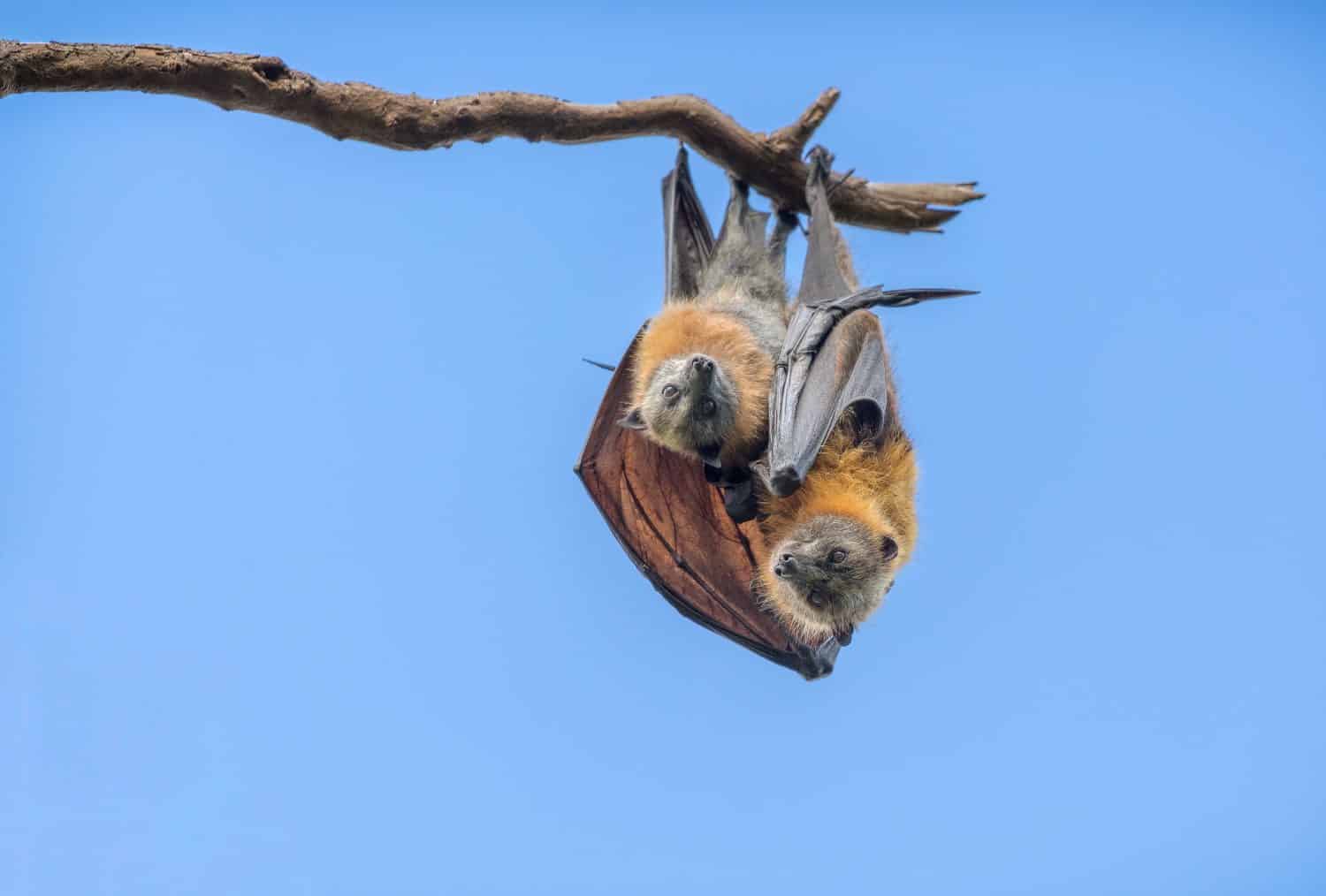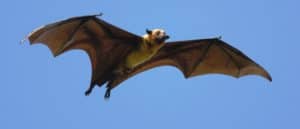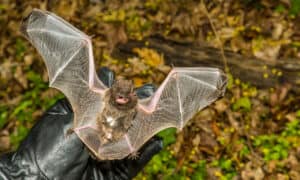Most bat species are highly social and use complex social structures to maintain cohesion and prevent conflict. We know that communication is crucial to group cohesion, so how do bats communicate, and what are they signaling?
Read on to find out!
How Do Bats Communicate: Auditory Signals
The primary method of communication between bats relies on auditory signaling. Bats use high-frequency chirps, complex songs, squeaks, and screeches to convey intent, mark territory, communicate alarms, and locate each other. These sounds vary by species and even from family to family. The tonality of these sounds will differ depending on the season, message, and the intended recipient. Scientists consider bats to have the most complicated auditory communication abilities of any mammal besides humans.

Bats primarily communicate through auditory signaling.
©Rudmer Zwerver/Shutterstock.com
Frequency Range
Humans can perceive sounds from 20 Hertz (Hz) up to 20,000 Hz. In contrast, bats are sensitive to sounds from just under 100 Hz up to an incredible 200,000 Hertz (200 kHz). This means that some sound bats emit is within the ultrasonic sound waves (above 20,000 Hz) and can’t be perceived by humans without equipment.
How Bats Communicate: Echolocation
The use of echolocation is part of bats’ complex audio-vocal communications. Echolocation in animals is defined as the process in which matter is located by reflected sound. Bats use echolocation by producing high-frequency and ultrasonic sound waves in narrow, intense streams and then processing the reflected sound (echo) as directional information. This echolocation occurs at frequencies typically above 15,000 Hertz. You may be familiar with using echolocation from insectivorous bats to locate prey at night.
Echolocation as Social Communication Between Bats
However, echolocation for social communication between bats is lesser known and understudied. In 2012, researchers published their work on echolocation as a form of social communication in free-living bats. Specifically, they studied echolocation calls of the greater sac-winged bat (Saccopteryx bilineata). They found that these highly social, insectivorous bats could differentiate echolocation used by other greater sac-winged bats by sex and individual identity. Males tended to respond to the echolocation signals of other males in nearby colonies with aggressive calls. At the same time, they produced benign or complex courtship calls when perceiving the echolocation signals of females. The researchers also found that the echolocation calls featured unique characteristics, allowing colony members to discern between individuals.

Bats can use echolocation not only to locate prey but also to communicate socially.
©corbac40/iStock via Getty Images
How Bats Communicate: Parent-Offspring Signals
In another study on the greater sac-winged bat by scientists with the Smithsonian Tropical Research, researchers found that mothers produce specific calls, known as pups when communicating with their babies. Researchers found that these calls are similar to how humans use “baby talk” when communicating with infants to increase their attention and facilitate language learning.
During the first three months of their life, greater sac-winged pups begin practicing the various calls of their social group. The study revealed that mother bats interact with baby babbling with a different pitch and tone quality than the calls she uses with other adult bats. The researchers believe the responses from the mother bats could be a form of positive social feedback to aid in the pups’ practice of complex bat vocalizations. In contrast, male adult bats will respond to pups’ vocalizations, but they don’t change their pitch or tone. Instead, they use benign social calls consistent with the colony at large.
Additionally, mothers and pups use specific calls to locate each other when the mother returns to the roost. Based on the pup’s signature in the call, a mother can locate her baby within seconds of returning to a communal roost with hundreds or thousands of other bats.

Mother bats use specific pitches and tone quality when communicating with their babies.
©Nico Faramaz/Shutterstock.com
How Do Bats Communicate: Complex Songs
Bats are one of the few mammals to use complex singing as part of vocal communication. Bat songs are primarily used for courtship and territorial signaling for various social bat species. As subadults, both female and male bats of a number of species, including the Mexican free-tailed (Tadarida brasiliensis) and greater sac-winged bats, learn to produce territorial songs by mimicking adult males. As adults, only males produce these songs comprised of multiple syllables and phrases used in various orders and repeated. Researchers have identified three primary phrases in bat songs- a chirp, buzz, or trill.
Male bats primarily sing at dusk and dawn as both territorial warnings to other males and to attract young females searching for a new colony to settle in. In the greater sac-winged bat, territorial songs typically have buzzy and trill-like modulations lasting about 1.5-2 seconds. From generation to generation, vocal imitation by developing bats and genetic drift lead to variations in how the songs are comprised.
The photo featured at the top of this post is © Independent birds/Shutterstock.com
Thank you for reading! Have some feedback for us? Contact the AZ Animals editorial team.






